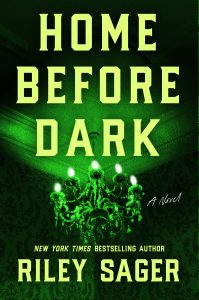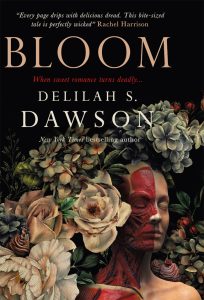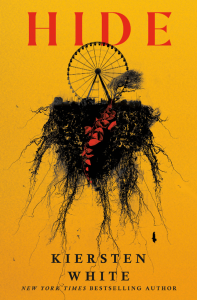
Abraham Verghese’s The Covenant of Water is the kind of sweeping historical novel that asks you to clear your weekend, pour a strong tea, and surrender to a world that feels both intimate and immense. Set in Kerala along India’s Malabar Coast, the novel spans 1900 to 1977 and follows three generations of a Malayali Christian family marked by a chilling pattern: in every generation, at least one member dies by drowning. Verghese threads that family mystery through medicine, faith, and the slow churn of history, creating an epic that doubles as a love letter to place and to the people who survive it.
The Setup and the Spell It Casts
We begin with twelve-year-old Mariamma on her way to an arranged marriage with a forty-year-old widower who owns land in Parambil. It is an unsettling opening by design, rooted in historical reality, that gradually unfolds into a textured portrait of a marriage, then a family, then a community. Mariamma grows into Big Ammachi, the fierce and tender matriarch who anchors the book. In parallel we meet Digby Kilgour, a Scottish doctor in the colonial medical service, and later Dr. Rune Orquist, whose life’s work is caring for people with leprosy. The separate strands seem distant at first, then begin to circle one another until their intersections arrive with quiet inevitability.
Kerala itself operates like a character. Rivers braid through the pages. Monsoons press down on the roofs. Domestic scenes glow with spices, hymns, and rituals. Verghese, a physician by training, brings clinical precision to the tactile world, yet the prose remains sensuous. You feel the slick of rain, the sting of iodine, the hush in a clinic at night.
Theme and Texture
This is a book about inheritance, not only of genes and disease, but of faith, guilt, privilege, and resilience. Verghese draws a line from personal mystery to scientific discovery, showing how medicine evolves from superstition and anecdote toward evidence and naming. The family’s water curse becomes a question of etiology, yet it never loses its mythic charge. Time and again, characters measure themselves against invisible forces, some spiritual, some social, some purely physical.
The religious texture is pronounced. Hymns, scripture, and a Christian worldview infuse the family’s language and choices. For readers who welcome that dimension, the book’s moral weight and compassion deepen. For those allergic to overt spiritual framing, the emphasis may feel heavy.
What Soars
Many readers will find the audiobook extraordinary. Verghese narrates his own work, and the performance is a masterclass in tone and restraint. His voice is calm, humane, and exact, which suits a story about doctors, diagnoses, and hearts under strain. If the 700-plus pages daunt you, the audio can be a surprisingly intimate gateway.
The character work is generous without being showy. Big Ammachi is a marvel, a woman whose wisdom is earned rather than announced. Side characters breathe in fully, then step back when the narrative needs space. The medical scenes, from surgery to leprosy care, are graphic enough to feel authentic, yet they serve character and theme rather than spectacle. Verghese’s descriptive gifts are steady and unflashy. The effect is cumulative. You look up and realize you have lived a lifetime with these people.
Where Readers Diverge
Length and pacing are the clear fault lines. At more than 700 pages, the novel is capacious, and at times indulgent. Some chapters, especially in the Digby thread, can feel digressive. Verghese often shifts timelines just as momentum builds, which some readers find elegant and others find exasperating. If you prefer a tight, single-arc narrative, this structure may test your patience.
The opening marriage between a twelve-year-old and a forty-year-old will unsettle modern readers, and it should. Verghese situates the relationship within its context and avoids sensationalism, yet the depiction asks for trust. Some will feel the portrayal moves into romanticization once the girl is older, while others will read it as a nuanced rendering of a historical reality that evolves into mutual devotion. Your response will likely hinge on your tolerance for morally complex material handled in a restrained voice.
Finally, while the religious current enriches the story for many, it may tilt the book toward Christian fiction from a marketing perspective for others. If heavy spiritual themes are not your cup of tea, you may find parts of the novel less resonant.
Verdict
The Covenant of Water is an immersive, humane epic that rewards patience. Verghese blends family saga, medical history, and cultural portraiture into a narrative that feels both old-world and urgent. The prose is elegant, the place is vividly alive, and the central mystery pays off with scientific clarity and emotional grace. Yes, it could be shorter. Yes, the pacing occasionally wanders. But the journey has the gravity of lived life, the kind that leaves you slightly altered when you close the final page.
Read if you enjoy
- Multigenerational family sagas with strong sense of place
- Medical history woven into literary fiction
- Character-driven narratives that unfold slowly but surely
- Novels that engage faith, ritual, and moral complexity
Consider skipping if you prefer
- Fast plots with minimal digression
- Single-timeline stories without structural braiding
- Minimal religious content
For me, this novel earns its scope. It is a compassionate chronicle of how families endure and transform, how science can decode a curse without dispelling mystery, and how water can be both a cradle and a cross to bear.
👉 Ready to dive in? Buy The Covenant of Water on Amazon


